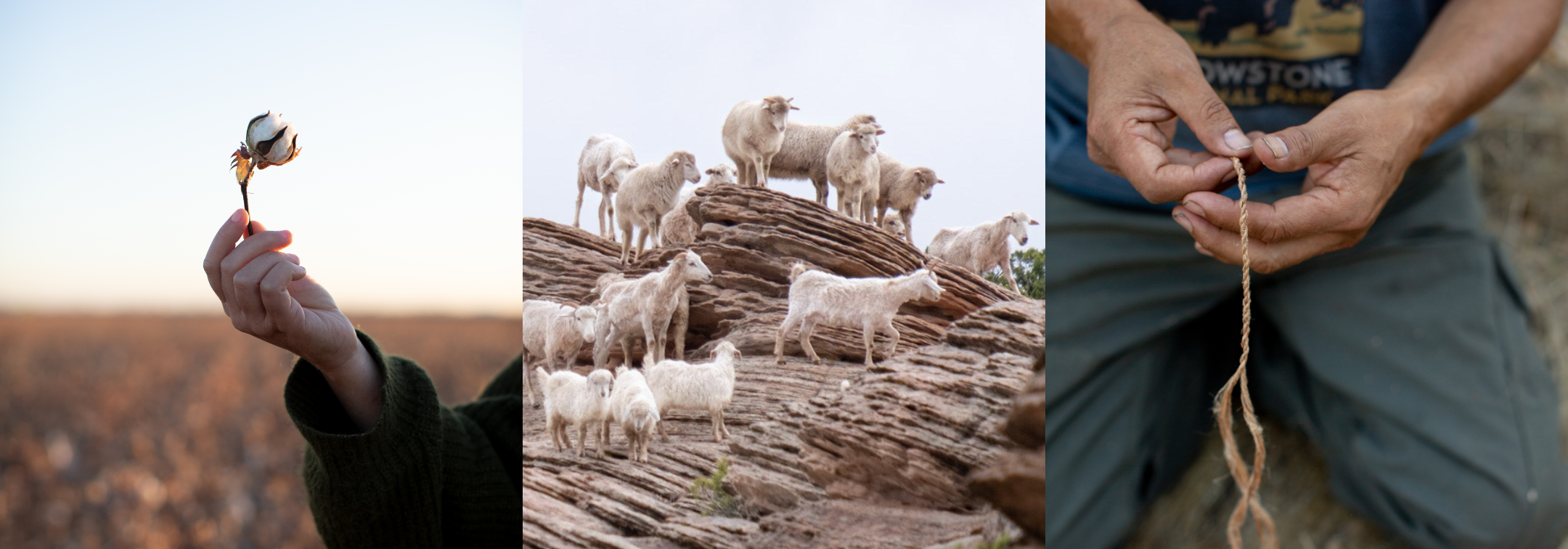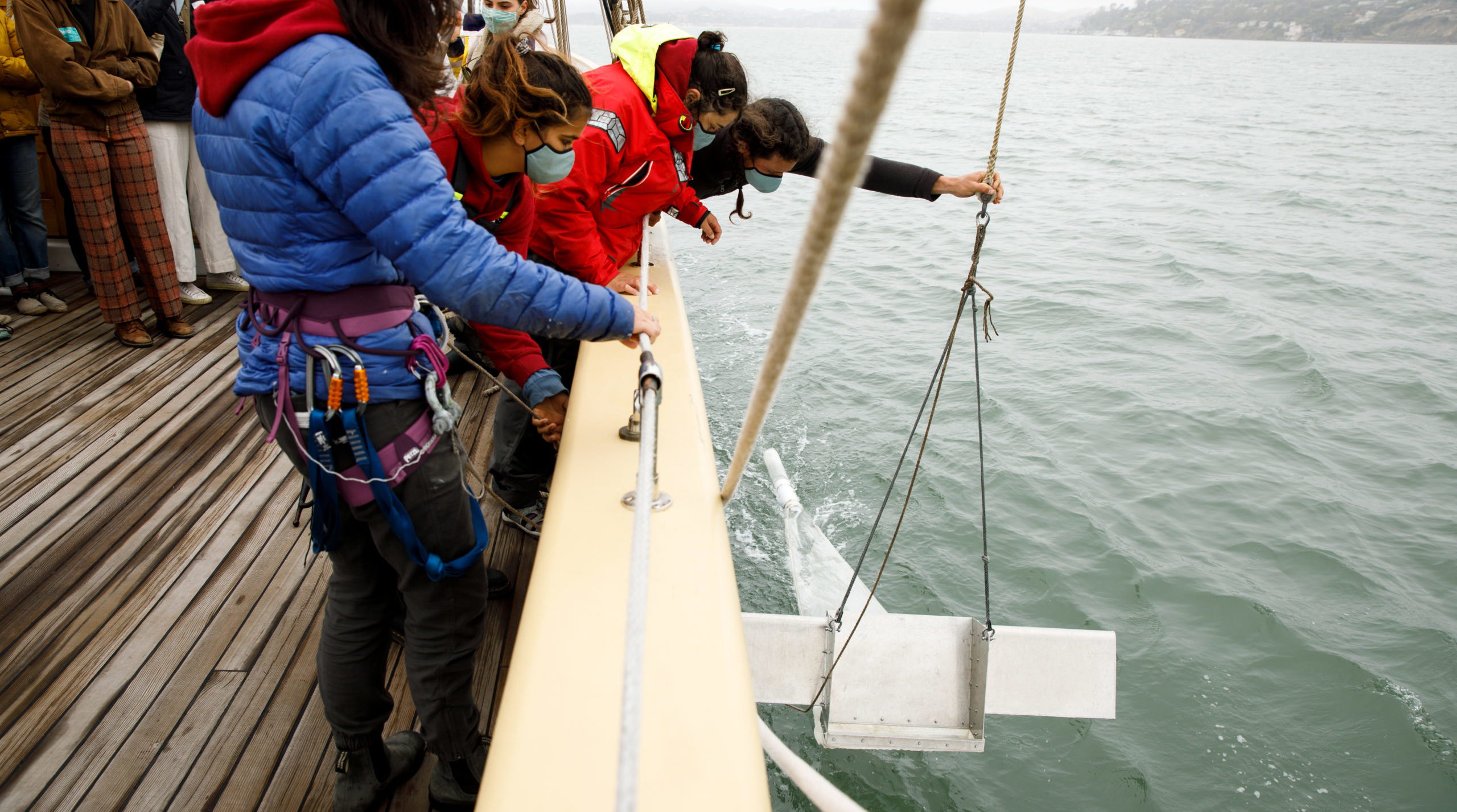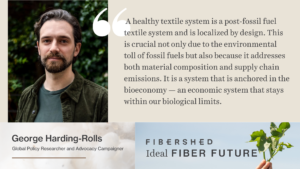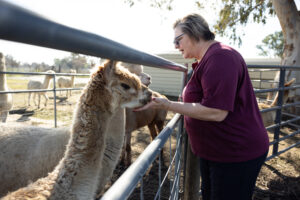Weaving Voices Podcast
Weaving Voices is a Whetstone Radio Collective x Fibershed podcast that stitches textile systems and traditions, economic philosophy, and climate science into a quilt of understanding. Designed to transform our thinking and actions both as citizens and material culture makers and users.
Hosted by Fibershed Executive Director Rebecca Burgess, Weaving Voices tells the stories of our textile culture. We learn from communities that have enduring textile recipes that have lasted for multiple millennia, a complete contrast to the current and contemporary system dependent on fossil carbon and volume-based production models.
If you wear clothes, you’ll want to tune into these stories about how the dominant narrative, imagery and trends try to tell us what is “appropriate” and good to wear. And how most of the time, this leaves out the voices, lives and daily realities of the people, animals and landscapes that make our clothing possible.

Ep 1: The Economic Waters We Swim In
In the first episode, we speak with Jason Hickel, an economic anthropologist and author. From the end of feudalism to the violent imposition of capitalism, they discuss the historic political, social and ecological threads that led to the economic model we now exist within. They also discuss why, under capitalism, the current reliance on growthism is unsustainable and what needs to be done to change course.
Listen to Ep. 1: “The Economic Waters We Swim In”
For additional reading, you can check out Jason’s book, “Less Is More: How Degrowth Will Save the World“.
Duration: 41:42 | Full Transcript | Listen on Apple Podcasts & Spotify
Ep 2: Mulberry Trees, Silk Moths & Modern Sustainability Measurements
Silk is a natural protein fiber that some caterpillars produce to protect themselves inside a cocoon. In the Brazilian variety, a silk cocoon is made of one filament that is 1.2 kilometers, or about three-quarters of a mile! Eight cocoons are then reeled together to produce the most common raw silk yarn. The resulting textile is not only durable, but also insulating.
However, the fiber has been deemed unsustainable by a privately funded textile sustainability tool known as the Higg Material Sustainability Index, the most common tool used by the global fashion industry to make sustainability assessments. Why is this? In episode two, Rebecca Burgess speaks with agronomist Joao Berdu and analyst Veronica Kassatly about how silk production helps rural communities, empowers women and is light on the earth. They also unpack how big business tries to push it down, in favor of more polluting, yet cheaper fabrics, like plastic.
Listen to Ep. 2: Mulberry Trees, Silk Moths & Modern Sustainability Measurements
Duration: 33:23 | Full Transcript | Listen on Apple Podcasts & Spotify
Ep 3: Reflections from an Industrial Ecologist
From 1962 to 1992, global GDP tripled, increasing the environmental impact being created by the global economy. It was also during the 1960s that the modern environmental movement began, leading up to the 1992 U.N. Earth Summit. In the 80s, environmental protection was a zero-sum game defined by conflict between environmentalists and environmental regulators, and business and industry. However, leading up to the Earth Summit, the narrative changed to a win-win paradigm that emphasized the possibility of profit maximization while maintaining environmental sustainability.
In Episode 3, Rebecca talks to industrial ecology professor Roland Geyer about the history of corporate social responsibility and sustainability programs, while exploring what else needs to happen to manifest change.
Listen to Ep. 3: Reflections from an Industrial Ecologist
Duration: 43:42 | Full Transcript | Listen on Apple Podcasts & Spotify
Check out Roland Geyer’s book, “The Business of Less: The Role of Companies and Households on a Planet in Peril“.
Ep 4: Andean Pastoralist Livelihood Initiative
The Andean pastoral community has formed a social contract with camelids native to the region. In recent years, however, their livelihood has been threatened by climate change. In Peru, 120,000 families are dependent on alpaca herding and 1 million families across the Andes are dependent on grasslands. Eighty percent of them live in extreme poverty.
In Episode 4, Rebecca speaks with restoration ecologist Mauricio Núñez of the Andean Pastoral Livelihood Initiative about addressing the economic issues faced by herder communities in Peru and revitalizing their cultural values.
Listen to Ep. 4: Andean Pastoralist Livelihood Initiative
Duration: 33:51 | Full Transcript | Listen on Apple Podcasts & Spotify
Ep 5: A Life Woven Together Between Shepherd and Sheep
The Diné people of the Navajo Nation have a deep relationship with the breed of sheep called Navajo-Churro—knowledge and practices of caring for the sheep have been passed down for generations.
In Weaving Voices Episode 5, three Diné guests join Rebecca to share stories from their work as shepherds and weavers who’ve committed their lives to the sheep they raise. Hear from Nikyle Begay, the co-founder and director of Rainbow Fiber Co-Op; weaver and spinner Zefren Anderson; and Jay Begay Jr., who raises Navajo-Churro sheep and Angora goats on his family’s ancestral land.
Listen to Ep. 5: A Life Woven Together Between Shepherd and Sheep
Duration: 44:15 | Full Transcript | Listen on Apple Podcasts & Spotify
Ep 6: Threads of Life; A Visual Map of Indonesian Island Communities
Textile and natural dye traditions have deep roots in communities across Indonesia. Founded in the late 1990’s amidst an economic crisis in Southeast Asia that threatened the viability of these traditions, Threads of Life is an organization that aims to support the continuation of Indonesian textile and dye systems.
In Episode 6, Rebecca speaks with co-founder William Ingram about the process behind making natural dye, the intergenerational practice of traditional weaving, and the ways in which Threads of Life supports the economic viability of these traditional practices.
Listen to Ep. 6: Threads of Life; A Visual Map of Indonesian Island Communities
Duration: 32:07 | Full Transcript | Listen on Apple Podcasts & Spotify
Ep 7: Shedding Plastic, Our Modern Wardrobes Impact on Oceans & Soils
Though water bodies tend to be the focus of much research on plastic fiber emissions, microplastics also have an impact on soil microbial communities after entering terrestrial ecosystems. In Episode 7, Rebecca interviews Timnit Kefala, a PhD candidate at the University of California, Santa Barbara, about her research into microplastic fiber flows.
Listen to Ep. 7: Shedding Plastic, Our Modern Wardrobes Impact on Oceans & Soils
Duration: 37:59 | Full Transcript | Listen on Apple Podcasts & Spotify
Ep 8: Labor’s Lever & a Just Transition for Fast Fashion Workers
Any article of clothing that says ‘Made in the USA’ has about an 80 to 85 percent likelihood of being made in Los Angeles, the garment production capital of the U.S. Garment workers
To learn more about the working conditions of garment workers in Los Angeles, Rebecca speaks with Marissa Nuncio, director of the LA-based labor rights organization Garment Worker Center. GWC has been working successfully to improve LA’s labor conditions and set in motion increasingly equitable systems for making our clothing.
Listen to Ep. 8: Labor’s Lever & a Just Transition for Fast Fashion Workers
Duration: 37:04 | Full Transcript | Listen on Apple Podcasts & Spotify
Ep 9: Kantamanto Market — life and livelihood in the throws of fast fashion’s waste streams
The Kantamanto Market in Accra, Ghana is one of the largest second hand markets in the world. Every week, it sees around 15 million garments coming in from the Global North, but 40 percent of that is not resold because of factors like poor condition.
In Episode 9, Rebecca Burgess speaks with fashion designer Sammy Orteng, who is the Community Design Lab Manager of the OR Foundation, an educational non-profit working in Ghana to establish a justice-led circular economy.
They talk about the innovative upcyclers at Kantamanto, the girls and women who carry bales of clothes weighing upwards of 55 kg through the market, as well as what textile culture looked like pre-colonization in contrast to what it looks like today.
You can also learn about this issue and the work of the OR Foundation in Episode 5 of the podcast Black Materials Geography, in which host Teju Adisa-Farrar speaks with designer Chloe Asaam of the OR Foundation.
Listen to Ep. 9: Kantamanto Market — life and livelihood in the throws of fast fashion’s waste streams
Duration: 33:38 | Full Transcript | Listen on Apple Podcasts & Spotify
Ep 10: Cotton Before it Became the Fabric of Everyone’s Lives
Introduced into the Pueblo Southwest by Indigenous traders from Mesoamerica around 600 B.C.E, cotton has been prevalent among communities in what is now called the western and southwestern U.S. for millennia.
In the final episode of Weaving Voices, Rebecca learns more about cotton systems in the Pueblo Southwest from educator and weaver Louie García, who is Tiwa and Piro Pueblo from the Piro-Manso-Tiwa tribe of Guadalupe Pueblo in Las Cruces, New Mexico.
He discusses the important role of cotton in the Pueblo people’s spiritual practices; the traditional role of Pueblo men in the production of cotton textiles; and the long precolonial history of trade across bioregions.
Listen to Ep. 10: Cotton Before it Became the Fabric of Everyone’s Lives
Duration: 39:23 | Full Transcript | Listen on Apple Podcasts & Spotify

Archived: Soil to Soil Podcast
Our Soil to Soil Podcast connects the dots in the lifecycle of clothing and material culture. Each episode offers a look at how and why our community is working to cultivate fiber and dye systems that build soil and protect the health of our biosphere. Tune in to seasons 1 and 2 to hear from a Climate Beneficial™ verified sheep rancher, experts in soil carbon science and modeling, artists who are shaping slow fashion, and more.



